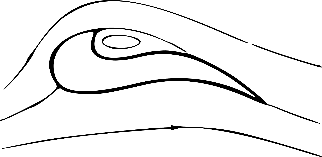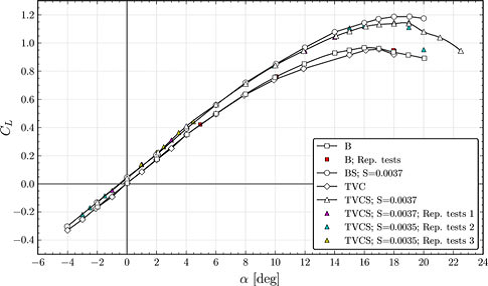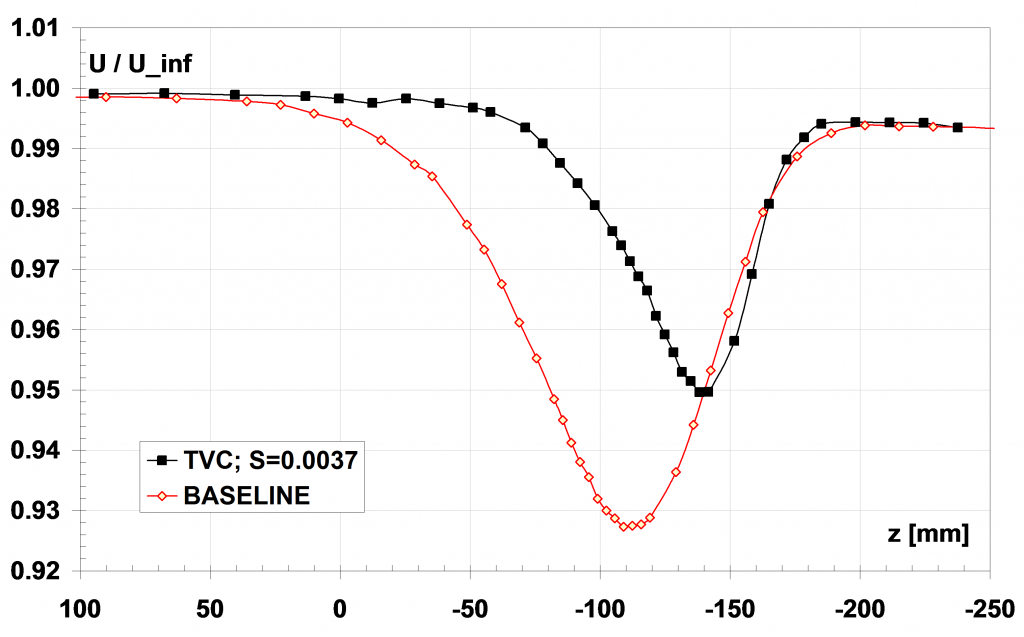The presence of an appropriately designed cavity on the suction side of an airfoil can considerably improve the profile’s aerodynamic performances. The cavity is able to trap a vortex inside and, at the interface, the enhanced shear layer originate a “slip wall effect” influencing the flow at the reattachment region as well as downstream (see schematic below). The ultimate effect is the delay of the flow separation with beneficial effects on the produced lift and drag.

To successfully benefit from the vortex-cavity phenomenon, it is essential to stabilize the vortex within the cavity. To this end, local flow suction is applied through a porous region of the cavity wall. Pressure distributions around the airfoil and within the flow wake were measured and analized (see figures below). Moreover, the unsteady flow development due to the vortex-shear layer dynamics resulting into pressure fluctuations inside and downstream of the cavity was capture too using Kulite pressure transducers.


The effect of the vortex-cavity phenomenon can be appreciated on the lift and drag coefficients. For comparison, a classical boundary layer suction configuration was also tested. The drag coefficient curve of the controlled airfoil showed sharp discontinuities and bifurcative behavior, generating two drag modes. A strong influence of the angle of attack, of the suction rate and of the Reynolds number on the drag coefficient was observed. With respect to the references baseline airfoil (without cavity), drag reduction was achieved only for higher suction rates. Compared to the classical boundary layer suction configuration, the drag reduction was higher for the same suction rate only in a specific range of angles of incidence (i.e. between -2° and 6°) and only for the higher Reynolds numbers. Moderate increments of lift were observed for the controlled airfoil at low incidence, while a 20% lift enhancement was observed in the stall region with respect to the baseline canfiguration.
Pressure fluctuations measurements in the cavity region suggested a very complex interaction of several flow features. The two drag modes were characterized by typical unsteady phenomena observed in rectangular cavity flows, namely the shear layer mode and the wake mode.
Contacts
Prof. Gaetano Iuso
